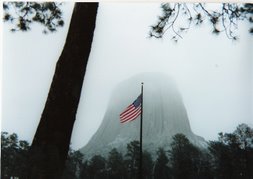Keeping on Eisenhower, the US Interstate system was passed into law in 1956 by the former General when he was President. Eisenhower was in a great position to realise the importance of such roads.
When he was based in Germany, shortly after the Second World War, Eisenhower was impressed by the German Autobahn system which was built by public works in the 1930s. This has often been wrongly cited as the inspiration for the US network, but this is not strictly true. Plans for such integrated roads had been in the pipeline as early as 1916.
Eisenhower however also had experience of travelling across the vast distance of the USA by road. He was part of a 1919 Army convoy travelling over 3,000 miles from Washington DC to Oakland, California. It took the convoy almost 2 months to complete the journey.
Eisenhower, as a military man realised the importance roads could have for defence and emergency situations. There is an urban myth that every five miles one mile is straight to allow aircraft to land and make temporary runways in case the USA was under attack by foreign or enemy forces. The contours of the land and the low bridges make this improbable. Also, it occurs to me that if the US could use the interstate as runways then surely the Soviet Union could have too?
There is no doubt of the economic benefits the Interstate system has brought to America, especially the more remote and rural towns. There is a counter argument, such as the old Route 66, where some towns were bypassed by the new interstates, but sadly this is always likely to happen.
The current US interstate system is 47,000 miles long, which is the second longest in the world after China.
Surely the next challenge for US transport is not really roads but their high speed rail network which is in desperate need of investment and development.







No comments:
Post a Comment